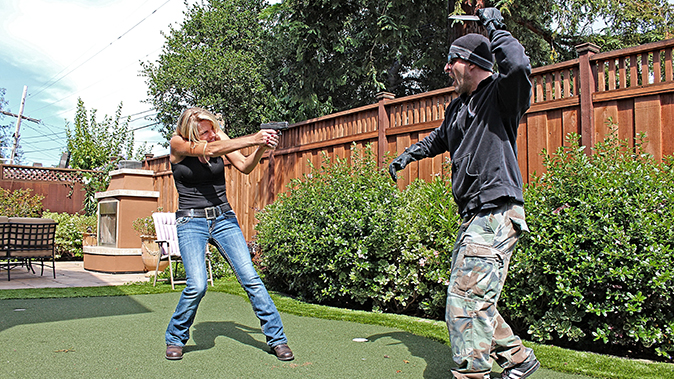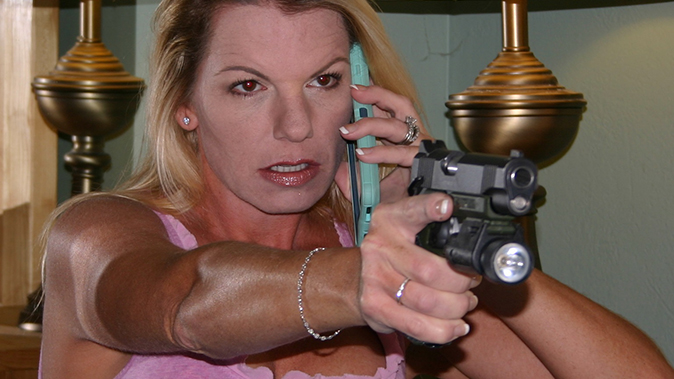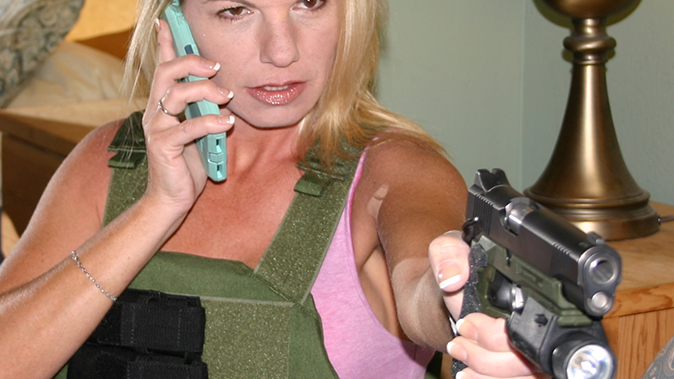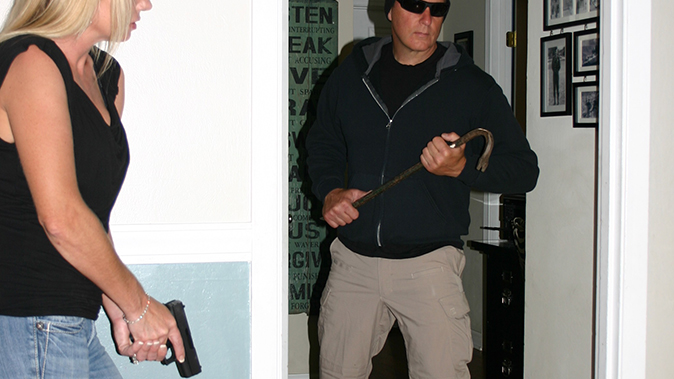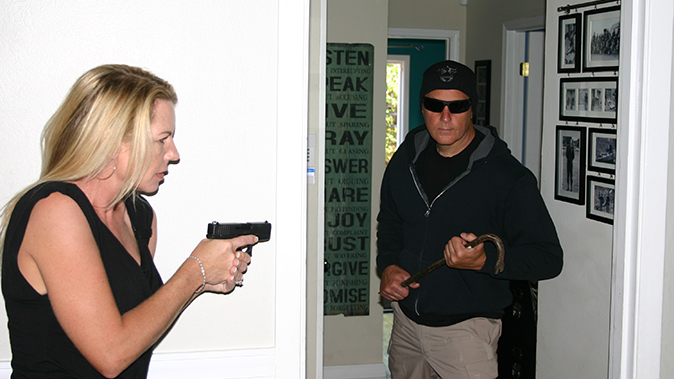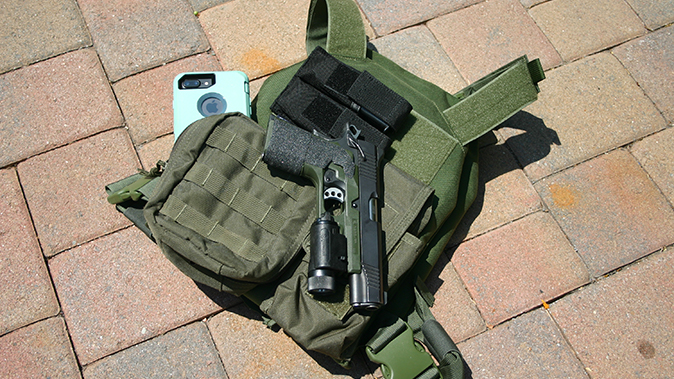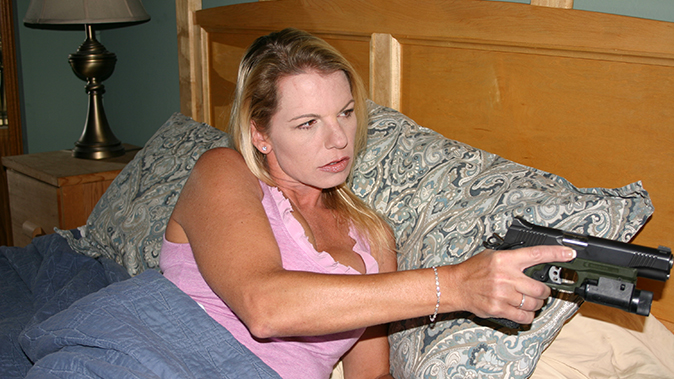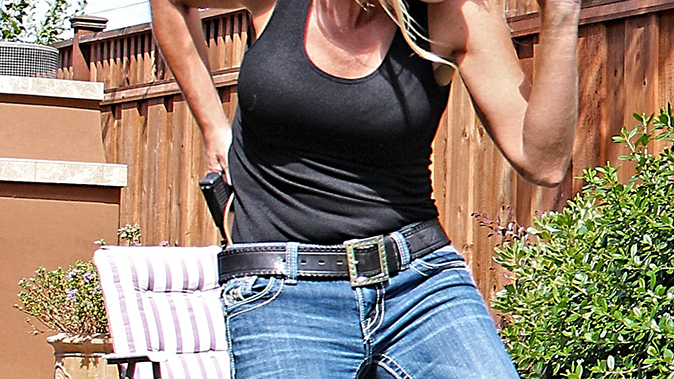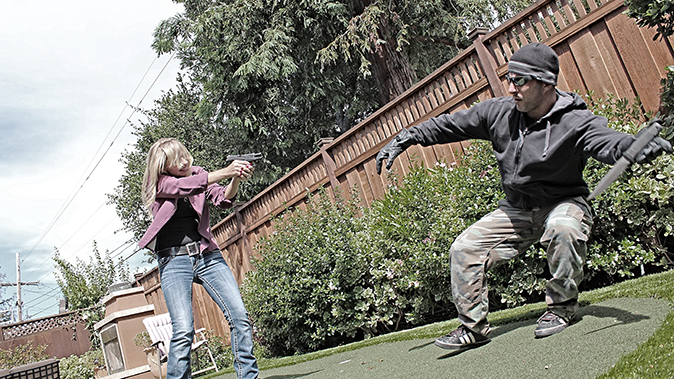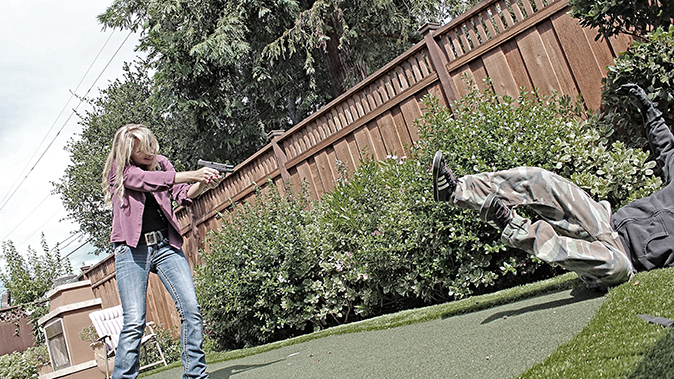Home defense isn’t a “one size fits all” proposition. Many things need to be considered, such as the size of the house, the response time for law enforcement, the number of children in the residence and so on. But who is going to be there to defend it is probably the most significant factor of all.
The military is currently going through a complete transformation, allowing women to serve in combat units like infantry and Special Forces. One of the biggest challenges faced has been the smaller stature of women. Even the most ardent feminist has to admit that most women are generally shorter and lighter than most men. This smaller size translates to less strength. Of course, you have standouts like Ronda Rousey and Venus Williams, but women typically aren’t as physically strong as men.
The Big Three
The age-old question in home defense, regardless of gender, is what weapon to carry. Most arguments can be boiled down to three types of weapons: carbine, shotgun or handgun. Tactically, there are obvious benefits to all of them.
Advertisement — Continue Reading Below
Carbines, such as AR-15s, have large magazine capacities, can be used in conjunction with a sling and have a lot of real estate for add-ons like optics and weapon lights. They add the element of range if it’s required. Shotguns have devastating close-range firepower, can also be slung and (with a pump gun) offer the psychological effect accompanied by the sound of a round being racked into a chamber. They can also fire a variety of loads, including 00 buckshot, slugs, birdshot and beanbag rounds. Handguns are very user-friendly, the most compact size-wise and represent the middle ground in terms of magazine capacity when compared to carbines and shotguns.
For women’s home defense, the handgun is the clear winner. It really comes down to size. Carbines and shotguns, even most compact ones, are large and somewhat heavy. A Remington 870 Express Tactical with a seven-round magazine and an 18-inch barrel is over 38 inches long and weighs over 7 pounds unloaded. That’s without add-ons like weapon lights, ammo saddles, optics, etc. It can quickly tip the scales at 10 pounds when it’s fully loaded and has a few bells and whistles added to it.
Advertisement — Continue Reading Below
Handgun Advantages
To some, the weight doesn’t sound that bad, but I suggest giving a weapon the SWAT test before deciding if it is heavy or not. In SWAT, you are required to hold weapons systems in the ready or low-ready position for long periods of time—sometimes for more than an hour. Try shouldering an 870 with the muzzle pointed downward for 15 minutes. You’ll notice that your arm and back muscles will start to hurt and shake pretty soon. Even with extensive training, it can be difficult to overcome this and maintain any degree of accuracy. This problem is magnified for smaller-statured people, male and female alike.
So, what’s the possibility of this happening during a home-defense situation? Very likely. If you are holding someone at gunpoint waiting for the police to arrive, you can be stuck in that position for a long time. According to American Police Beat, the average response time for an emergency call is 10 minutes. This doesn’t take into account more rural areas where law enforcement officers can take much, much longer.
This can seem like an eternity. You’ll soon find yourself at a very real tactical disadvantage once your upper body starts to get tired. As mentioned before, this not only effects your accuracy, but it can also affect your ability to physically defend yourself in a non-lethal encounter. If a home invader sees that your strength is drained, they may decide to rush you. Better start working on your biceps and triceps.
Advertisement — Continue Reading Below
Obvious Choice
The other issue is that shotguns and rifles are two-handed weapons. It is difficult to do something else, like call 911, when shouldering a long gun. Try a modified version of the SWAT test. Hold an AR-15 to your shoulder one-handed and use your other hand to try to make a phone call. You won’t be able to do so for very long, and you won’t be able to use the weapon or dial the phone very well. Firing a rifle or shotgun one-handed is a bad idea to begin with. They are designed to be operated with two hands, not one.
So, for women, the obvious choice is a handgun. It allows longer periods of readiness in low- and high-ready positions. A handgun can be held comfortably in a ready, low-ready, or “Sul” position for long periods of time with minimal muscle fatigue. Handguns are also better suited to multi-tasking like opening and closing doors. That’s why SWAT operators carry handguns and carbines. When two-handed manipulation is required, or in very close quarters, most operators will opt to use a handgun.
The Right Size
So, what type of handgun should a woman choose? It generally depends on what the shooter is comfortable with. It should be a tactical caliber, such as the 9mm, 10mm, .40 S&W, .45 ACP, etc. Your favorite .22 is not a good home-defense option if a higher caliber is available.
Advertisement — Continue Reading Below
A high magazine capacity is preferable, and a mounted light is a good idea. There are many good platforms to choose from, such as Glock, Sig Sauer, Ruger, HK, Colt, Springfield Armory and so on. Stay away from the bargain, off-brand guns. I won’t mention any names here, but they usually cost around $200 and are not known for their reliability.
The great thing with most handgun systems in production today is that there are generally small, medium, and large variants of the same weapon. Many also have interchangeable backstraps and grips. The combination of the right-sized frame coupled with the proper grips means that there is a handgun available for most every shape and size of hand.
Using a non-weapon-mounted light isn’t as good of an option. Your accuracy will suffer even with the best technique. This problem is compounded when someone with smaller hands is trying to accomplish one of these techniques. It also defeats one of the main advantages of the handgun by tying up both hands, with one holding the gun and the other a flashlight.
Advertisement — Continue Reading Below
Revolvers
For some, a revolver may be a good option. The obvious limitation is ammo capacity, generally five to six rounds, and the amount of time it takes to reload compared to a semi-auto. That being said, I’ve trained a few women who preferred them, mainly for their reduced weight and size. At a minimum, it should be a .38 Special or larger, and speedloaders should be handy. “Airweight” models are great for carrying but aren’t generally as much fun to shoot due to their heavier recoil. If you opt to carry or use one for home defense, make sure you train with it. And don’t cheat; make sure you train with .357 Magnum rounds if you plan on using those for self-defense.
Dress For Success
A nice option to have with the handgun is a light tactical vest. It should have extra magazines and a flashlight. Another great item to have is a cell phone. Many cell phones have an option where, even when you no longer pay for cellular service, you can still call 911. Everyone has a couple of old, unused cell phones lying around. Check and make sure they have the “911 only” option in advance.
Advertisement — Continue Reading Below
When something goes bump in the night, it’s very convenient to have a tactical vest. This may sound a little over the top, but I can think of more than one situation in my own life when I went to go investigate a strange noise in or out of my house. I grabbed a gun but did not have a flashlight to illuminate any possible threats. Or, conversely, I grabbed a flashlight but no gun. You don’t want to be scrambling around in the dark trying to gather up everything you need when you hear the boogey man coming down the hallway.
With any home defense weapon, it is just as important to secure it as it is to have it handy when you need it. Home burglaries are at an all-time high, so you don’t want a crook to break into your pad and steal your piece. Similarly, they need to be kept out of the hands of children and the untrained.
My wife and I keep a handgun (a Kimber TLE II) in a small safe in our bedroom that will only open with our fingerprints. It’s concealed in a discreet location but is quickly and readily accessible for both of us should we need it.
Advertisement — Continue Reading Below
Home Defense Plan: Final Thoughts
A tactical vest can be stored in a small safe. These can be configured with a biometric (fingerprint) lock as well. It would be best to stay away from a combo lock since you would waste precious seconds trying to get it open and would probably have to illuminate it to do so, giving away your position.
For everyone, it is important to accept our physical limitations when it comes to home defense. One of the biggest killers in lethal-force encounters is pride. Don’t let yours get in the way of making a sound tactical decision.
This article was originally published in “Personal & Home Defense” #204. To order a copy, visit outdoorgroupstore.com.
Advertisement — Continue Reading Below
